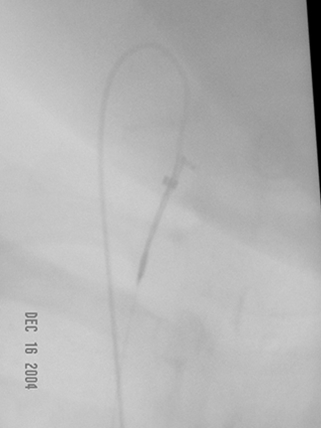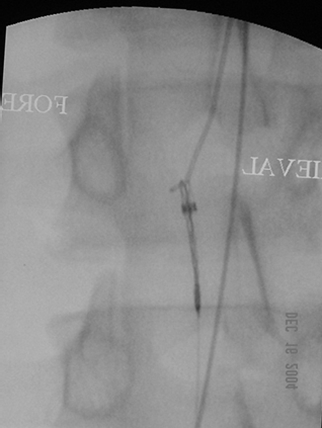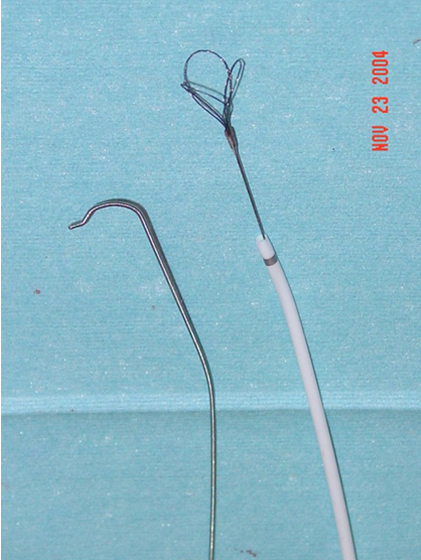Guidewires can disappear into patients during endovascular interventions such as the insertion of a central venous access. This typically occurs when the operator advances the guidewire and the dilator, sheath, or catheter as a unit, rather than advance these devices over the guidewire. The guidewire is simply a ‘guiding’ tool and should be regarded and employed as such; it is the stem upon which the interventionalist’s tubes and catheters glide to their destination. The wire should be fixed in position as the guided object is slid over it. The images below show the case of a patient from an emergency department in whom a guidewire disappeared into his right common femoral vein during a line placement. It was a 3mm J 0.035 inch guidewire and extended from the groin to the right atrium, but was safely retrieved with a snaring device passed up the inferior vena cava (IVC) from the contralateral groin into the right atrium. In the first image from the left, the guidewire is snared in the right atrium; in the second image, the snare and the wire are pulled into the IVC; the last image is a shot of the retrieved wire (shaped like a shepherd’s hook) and the snaring device (the wire with 3 loops at its end sticking out of a sheath).






